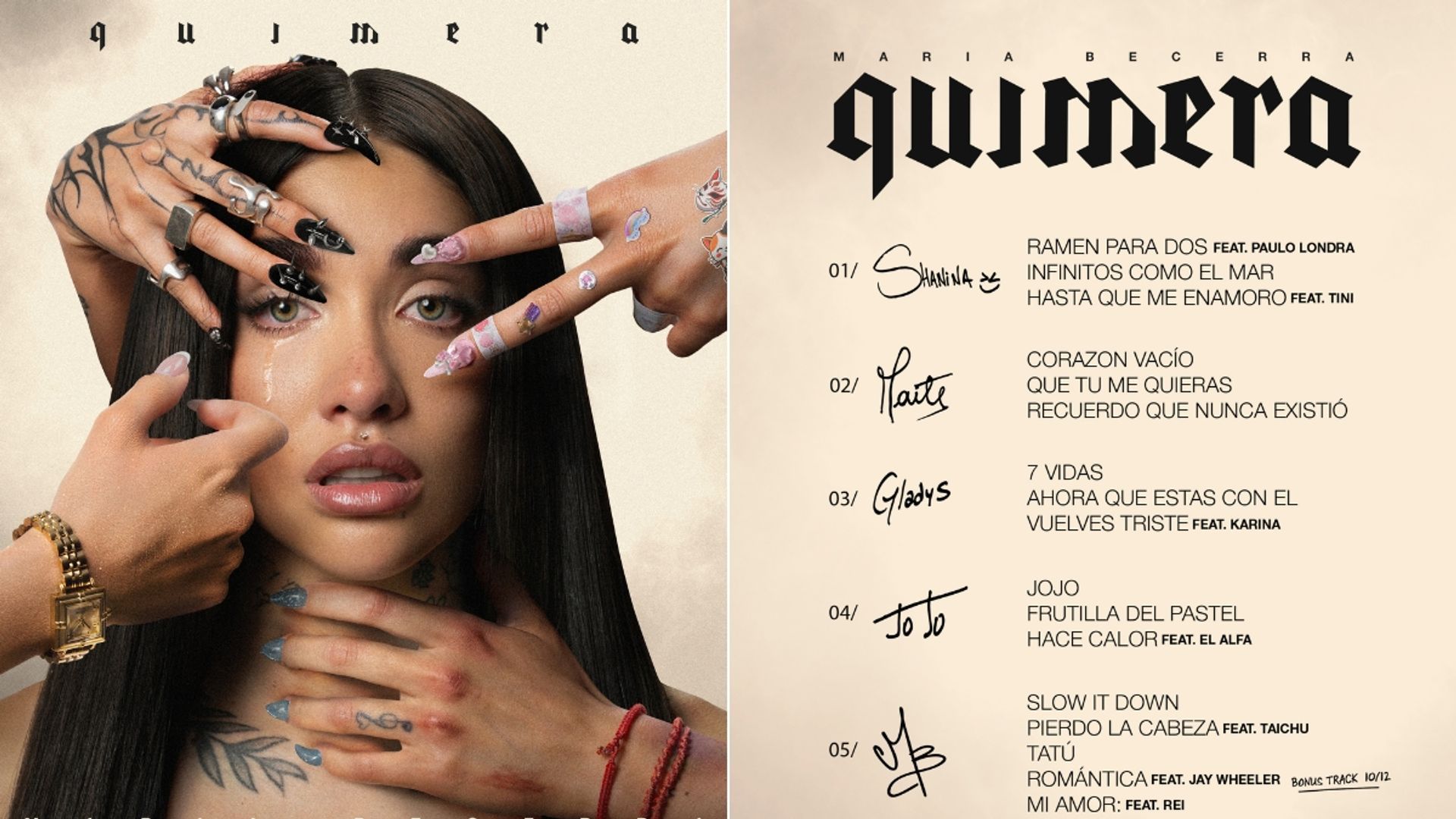Three years after her last studio album, Maria Becerra returns with Quimera, a project that signals a complete shift in her creative world. It emerges as her most vulnerable, far reaching and thematically cohesive body of work, born not from certainty but from emotional upheaval. As she explains, “Quimera is the most personal and ambitious project of my career.”
More than a year ago, she had a finished album ready to go. She recorded songs, closed ideas, and marked the road ahead. Then life hit severely. What she wrote started to hurt. Music, usually her refuge, became a mirror reflecting only sadness. She kept writing anyway, but every melody came from the same wound. This discomfort transformed into a question that shattered the entire project: how can one create from a place that encompasses more than just pain?
The answer became Quimera. It pushed her to rebuild the album from scratch and to invent a new emotional language. She stepped into introspection not to escape it but to reshape it. The result is a record that turns emptiness into movement, heartbreak into narrative and inner chaos into art.
“It is a deeply introspective and conceptual album where, through different alter egos, I was able to explore different worlds, each with its own personality, sound and perspective.”
A universe split in five voices
Maria has always written personal stories. This includes her own experiences and those of the people close to her. This time, she went further by creating four alter egos, each representing a different part of her identity. “These characters were born from very real emotions and experiences, and they allowed me to tell stories from new places, both musically and visually,” she explains.
Maite, the tender one, shaped by vulnerability and the kind of love that teaches. Jojo embodies pure shine and sensuality, with a voice that moves freely without apology. Shanina represents the fire that embodies intensity, duality, and shifting desire. Gladys, the grounding force, is connected to her roots, her neighborhood, and her raw truth.
Each identity leads three tracks, exploring distinct genres, moods, aesthetics, and emotional tones. WWithin the album, salsa merges with urbano, R&B blends with pop, and dembow coexists alongside experimental textures. IIt's a mosaic where melancholy and empowerment coexist without friction.
At the center of the album is Maria herself. No character, no mask, no performance. Five songs reveal her most authentic voice. These songs talk about falling apart, healing, holding on and letting go. They are the spine of the album, the moment she stops storytelling and starts confessing.
A deeper creative hand
Produced by Xross with Maria deeply involved in the process, Quimera shows her stepping further into production and visual direction. Several music videos come from concepts she developed herself, marking a new stage in her creative control.
Collaborations that serve the story
Features in Quimera are not just names. They expand each identity’s world. Taichu, Jay Wheeler, and J. Rei enter the album's most vulnerable spaces. TINI and Paulo Londra match the energy of Shanina. Karina La Princesita amplifies Gladys. El Alfa meets Jojo at her most magnetic point.
Bringing 'Quimera' to life
The official presentation lands December 12 and 13 at Estadio River Plate, the biggest venue in South America, in its first-ever 360-degree show. It is a massive staging move that hints at something beyond a concert. IIt feels like a full artistic vision unfolds live.
As Maria puts it, “I hope listeners can connect with these songs and with the entire universe we created around this project.”
